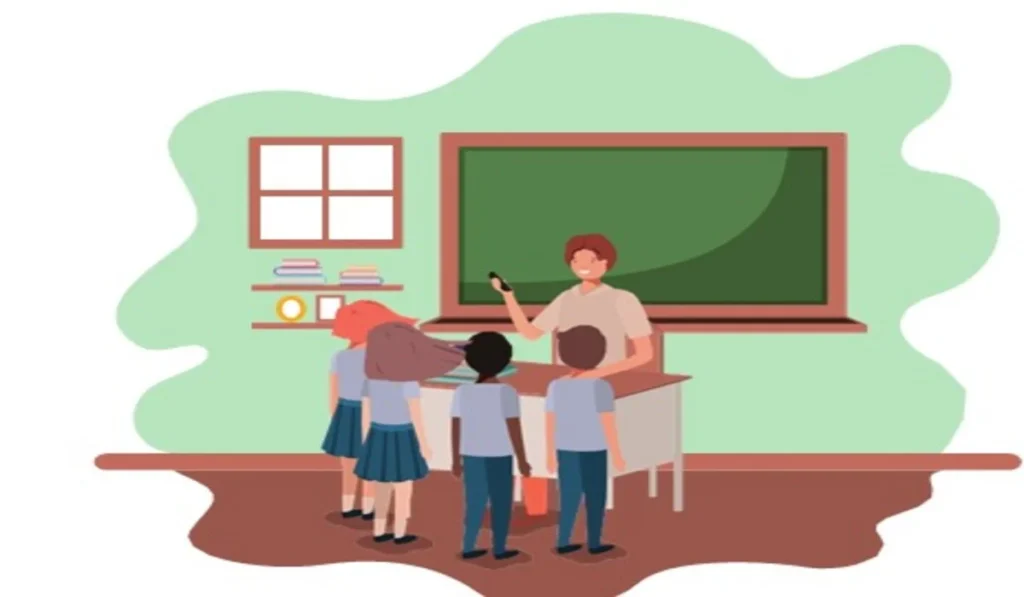Genuine connections are the cornerstone of effective learning. Beyond the transmission of knowledge, it is the bonds forged between teachers and students that lay the foundation for a thriving educational environment.
Imagine this: you walk into your classroom, not as a stern figure barking out instructions, but as a friendly guide on a journey of discovery. Your students aren’t robots programmed to memorize facts, but curious minds eager to explore and connect. This isn’t a fantasy – it’s the magic that happens when you cultivate genuine connections with your students.
Sure, schools are supposed to be about knowledge, but the truth is, facts alone don’t ignite a love for learning. They might get regurgitated on tests, but true understanding and engagement come from a deeper place. That place is built on trust, respect, and the feeling of being valued as an individual.
Why Authority Isn’t Enough: Beyond the Lecture Hall
Think back to your own school days. Did you learn best from teachers who simply lectured from the front of the room, or from those who connected with you on a human level? Chances are, the latter sparked a deeper interest in the subject.
Relying solely on authority creates a one-way learning street. Students might comply with instructions, but the intrinsic motivation to truly grapple with the material is missing. Genuine connections are the magic ingredient that transforms classrooms. Here’s why:
Trust and Open Communication:
Remember that shy student who never spoke up in class? Now picture Ms. Reddy a teacher who noticed their artistic talent and genuinely inquired about their love for drawing. This simple act of interest unlocked a door. The student, feeling valued and safe, began participating in class, even using their art to illustrate complex concepts. Trust, built through genuine care, opened the door to deeper learning.
Motivation and Engagement:
Genuine care is a powerful motivator. Take Sriya a student whose eyes glazed over during history lessons. Mr. Thomas a history buff himself, noticed Sriya’s interest with World War II documentaries. Instead of dismissing this interest, Mr. Thomas seamlessly integrated historical events from those games into his lessons. Suddenly, history wasn’t just dates and names; it became a world that connected to Sriya’s passion. This genuine effort on Mr. Thomas’s part ignited Sriya’s curiosity and transformed her learning experience.
From Textbooks to Trust: Building Bridges with Students
- Creating genuine connections requires a conscious effort to move beyond the traditional teacher-student dynamic. Here are some practical tips to build trust and foster a welcoming learning environment
- Be Approachable: Ditch the teacher persona that screams “don’t talk to me.” Smile, greet students by name, and show genuine interest in their lives beyond academics. Ask about their hobbies, weekends, or upcoming events. This small shift sets the tone for a more open and human classroom.
- The Art of Active Listening: True connection goes beyond simply hearing someone speak. Practice active listening. Pay close attention to what your students are saying, both verbally and nonverbally. Acknowledge their concerns, big or small. Validate their emotions and let them know their voices matter.
- Celebrate Uniqueness: Every student is an individual with a unique tapestry of strengths, interests, and even quirks. As a teacher, it’s crucial to recognize and value these differences. This doesn’t mean condoning disruptive behavior, but rather understanding that each student learns and expresses themselves in their own way.
- Sharing Yourself Strategically: While maintaining professional boundaries is essential, strategically sharing a bit about yourself can be highly effective. Talk about your hobbies, a movie you enjoyed, or a book you’re reading. This humanizes you and creates a sense of relatability, encouraging students to feel comfortable opening up themselves.
- Respectful Boundaries: Sharing yourself is valuable, but it’s important not to overstep boundaries. The focus should always be on the student and their needs. Remember, you’re not there to unload your personal baggage.



